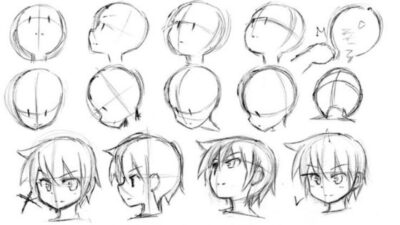
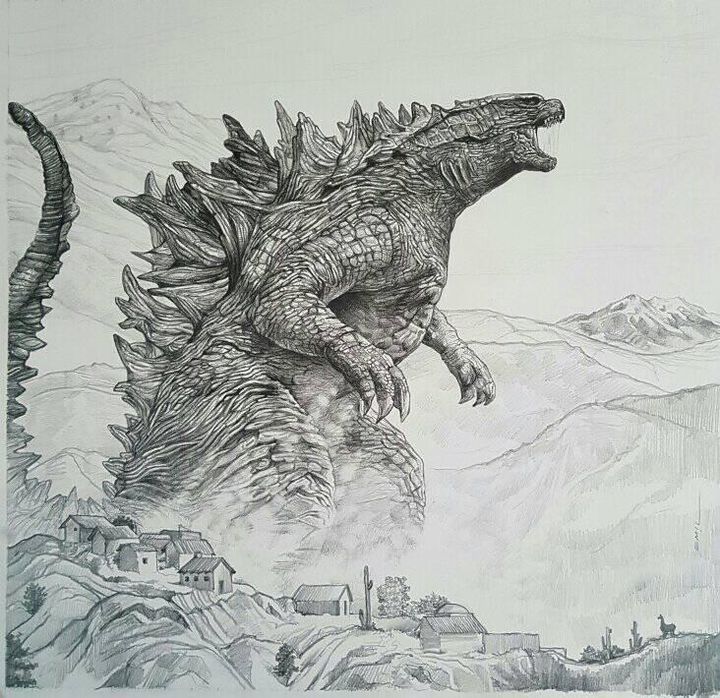
The behemoth of kaiju cinema, Godzilla, has stomped his way into popular culture for decades, captivating audiences with his destructive power and iconic silhouette. For artists, depicting this legendary monster presents a unique challenge and a thrilling opportunity to explore scale, texture, and immense power. Creating a truly epic Godzilla drawing requires more than just sketching a large lizard; it demands a deep understanding of monstrous anatomy, environmental interaction, and the atmospheric elements that make him so formidable. This guide delves into seven essential techniques that will elevate your kaiju art, transforming your Godzilla from a mere doodle into a masterpiece of destruction and awe.
1. Mastering Kaiju Anatomy and Proportions
Before you can bring Godzilla to life on paper, you must first understand his fundamental structure. Unlike drawing humans or animals, kaiju anatomy often blends reptilian, dinosaurian, and mythical elements. Godzilla’s distinct silhouette – broad shoulders, thick neck, powerful legs, and that signature dorsal fin array – must be accurately translated.
The Foundation: Basic Shapes
Begin your Godzilla drawing by breaking down his complex form into basic geometric shapes. A large oval or bean shape can serve as his torso, connected to a sturdy cylinder for his neck and smaller ovals for his head. His powerful legs can be constructed from a series of overlapping ovals and cylinders, emphasizing their thickness and strength. This foundational approach helps establish correct proportions before diving into intricate details. Pay close attention to the scale of each part relative to the others. Godzilla’s head, while iconic, is relatively small compared to his massive body, contributing to his colossal appearance.
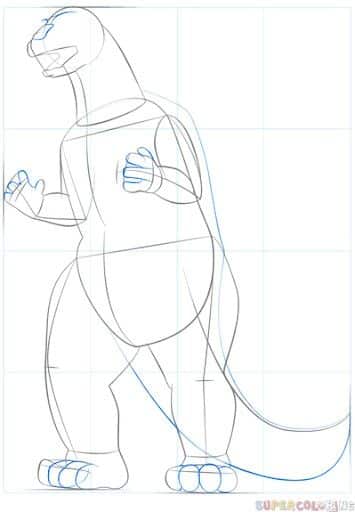

Reference is Key
Even seasoned artists rely on reference material. Study various iterations of Godzilla across films, comics, and concept art. Notice the subtle differences in his build, posture, and expression. Does your vision lean towards the classic Showa era, the menacing Heisei form, the lean and terrifying Shin Godzilla, or the brutish MonsterVerse design? Each has unique anatomical features. Observing how professional artists render his musculature, bone structure, and joint placement will significantly enhance the realism and power of your depiction. For foundational understanding in depicting figures, exploring resources on body drawing fundamentals can provide a strong basis, even for non-human subjects like kaiju.
Proportional Harmony
The balance of Godzilla’s proportions is crucial for conveying his immense weight and power. His center of gravity is low, rooted in his thick thighs and massive tail, which acts as a counterbalance. The length of his arms, the girth of his chest, and the span of his dorsal plates all contribute to his overall sense of scale. Avoid common pitfalls like making his head too large or his limbs too thin, which can diminish his imposing presence. Practice sketching different poses to internalize these proportions, allowing you to draw him confidently from various angles.
2. Emphasizing Form and Volume
A flat drawing of Godzilla misses the entire point of his colossal existence. To convey his sheer size and physical presence, you must master the art of rendering form and volume. This involves making your two-dimensional drawing appear three-dimensional, giving the illusion of depth and solidity.
Contouring and Roundness
Think of Godzilla not as a flat outline but as a series of interconnected, massive forms. Use contour lines that wrap around his body, following the curves of his muscles, the roundness of his limbs, and the undulations of his tail. These lines help define the shape and give the viewer a sense of his three-dimensional structure. Avoid straight, rigid lines where curves are needed. His body is a collection of powerful, rounded masses, not a collection of sharp angles.


Overlapping Forms
Employ overlapping forms to create depth. When one part of Godzilla’s body is in front of another, show that overlap clearly. For instance, an arm might partially obscure his chest, or a dorsal fin might overlap the one behind it. This visual cue tells the brain which element is closer to the viewer, pushing other elements further back into the implied space. This technique is especially effective for his layered scales and the complex arrangement of his dorsal fins.
Foreshortening for Dynamic Impact
Foreshortening is a powerful technique to convey depth and dynamic action. When a limb or part of Godzilla’s body is coming towards or receding away from the viewer, it appears shorter than its actual length. Mastering foreshortening can make Godzilla’s attacks feel more impactful, his strides more powerful, and his overall presence more immediate. Imagine his massive foot stomping towards the viewer, or his tail whipping out into the foreground – foreshortening will make these actions pop. Practice drawing cylinders and cubes in various perspectives to build your understanding of how objects appear when viewed at different angles, then apply this knowledge to Godzilla’s limbs and body sections.
3. Capturing Textural Detail: Scales, Spines, and Scars
What truly makes Godzilla feel ancient, powerful, and terrifying are the intricate textures that adorn his body. His rough hide, sharp dorsal plates, and battle-worn features tell a story of countless conflicts and enduring strength. Neglecting these details will result in a smooth, unconvincing kaiju.
The Scale System

Godzilla’s skin is not uniformly smooth; it’s covered in rugged, often irregularly shaped scales. These scales vary in size and prominence across his body. Larger, flatter scales might cover his torso, while smaller, rougher ones might appear on his limbs and face. To depict these, avoid drawing every single scale with equal emphasis. Instead, suggest patches of scales using varying line weights, shading, and slight textural patterns. Use clusters of scales, especially around joints and areas of tension, to create visual interest. Observe how light interacts with these textures, casting tiny shadows and highlights that bring them to life.
Dorsal Plates: The Iconic Spines
His dorsal plates are arguably his most recognizable feature. These jagged, bony protrusions run down his back, often glowing with atomic energy. Each plate should have its own unique shape, size, and sense of weight. They are not merely flat triangles; they possess depth and thickness. Consider their bone-like quality, their sharp edges, and the way they are anchored into his back. How do they catch the light? Are they chipped or scarred from past battles? Adding these imperfections enhances their realism and tells a story.
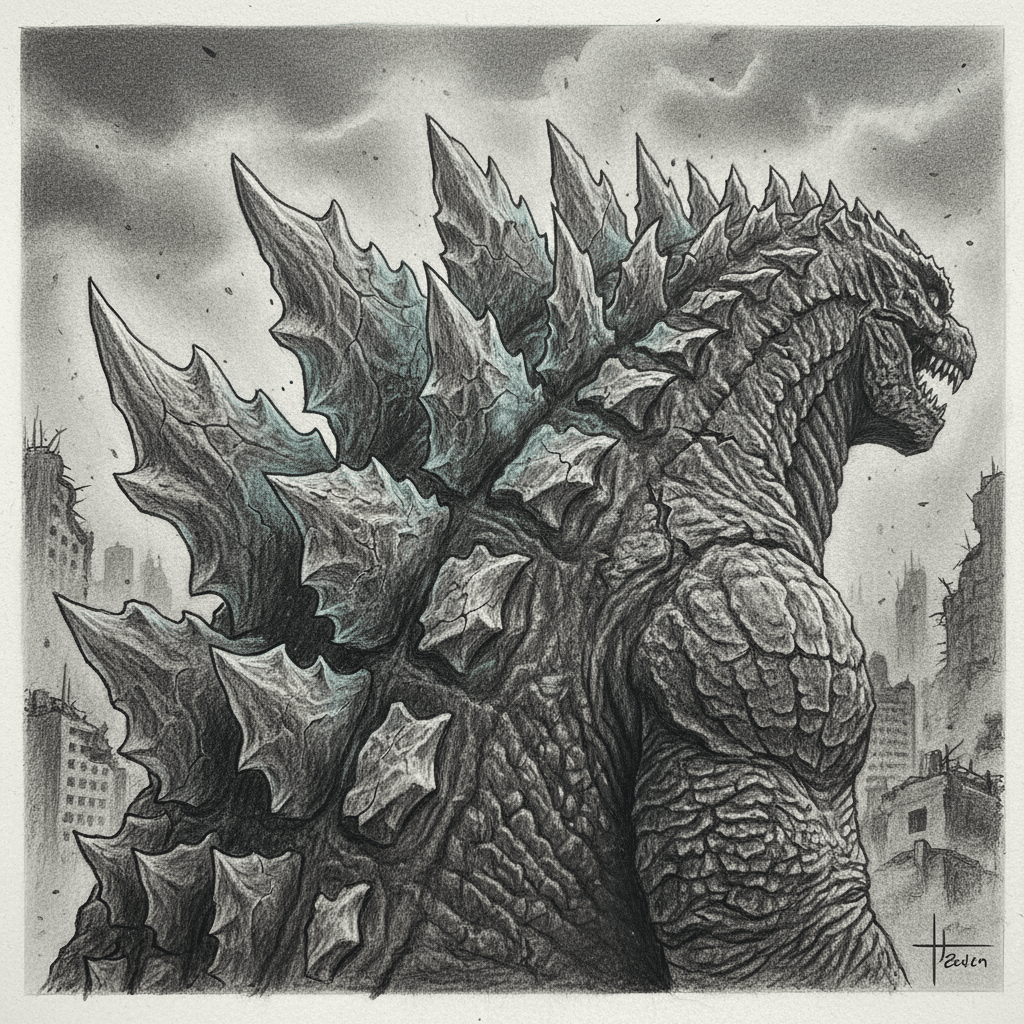
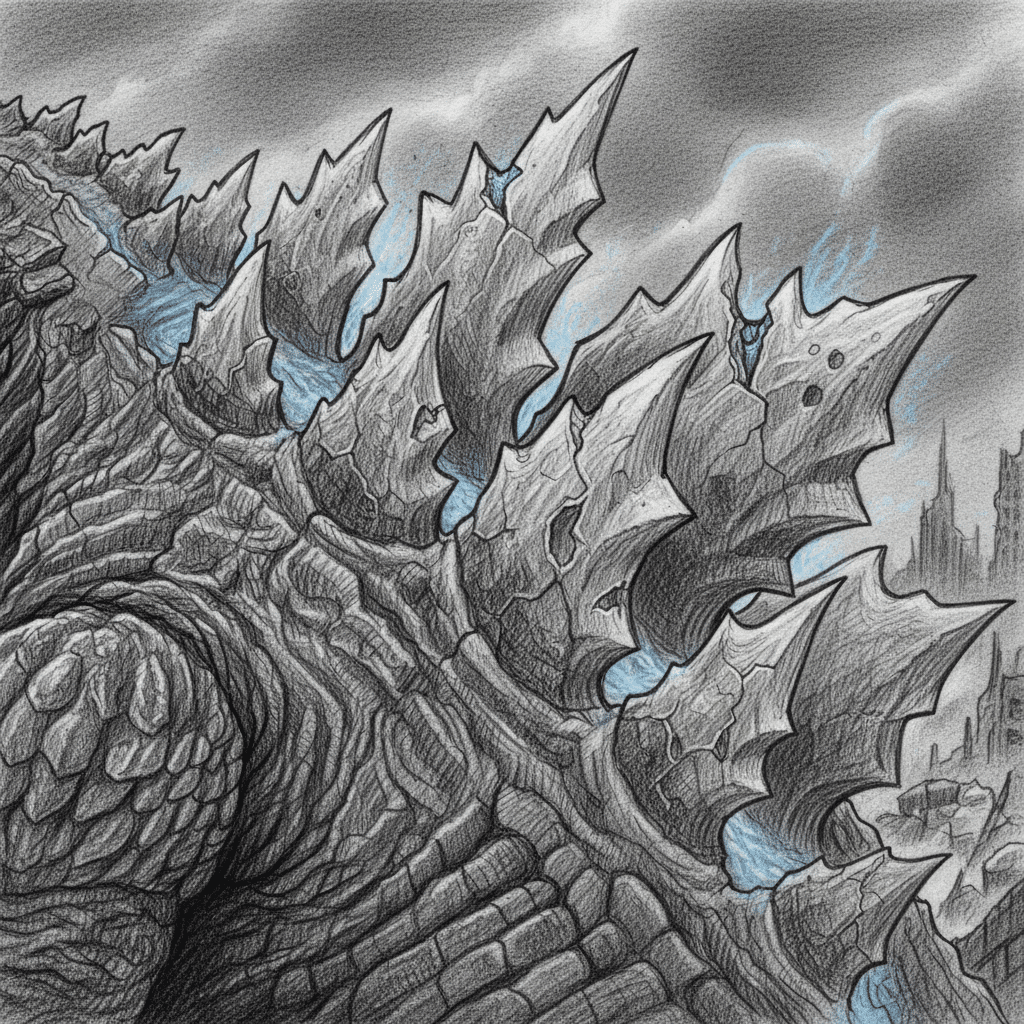
Battle Scars and Imperfections
Godzilla is a survivor of countless conflicts. Incorporating battle scars, scrapes, and other imperfections makes him feel more real and formidable. A chipped dorsal plate, a gash on his chest, or a section of roughened hide can hint at his long, violent history. These details add character and depth to your drawing, moving it beyond a generic monster toward a truly legendary creature. Experiment with stippling, cross-hatching, and varied line weights to create the illusion of rough, scaly skin and worn surfaces.
4. Dynamic Posing and Composition
A static, lifeless Godzilla does not convey the true essence of the King of the Monsters. To capture his power, menace, or even his weary resilience, dynamic posing and thoughtful composition are paramount. The way you arrange him within the frame and the pose you choose can dramatically impact the emotional resonance of your artwork.
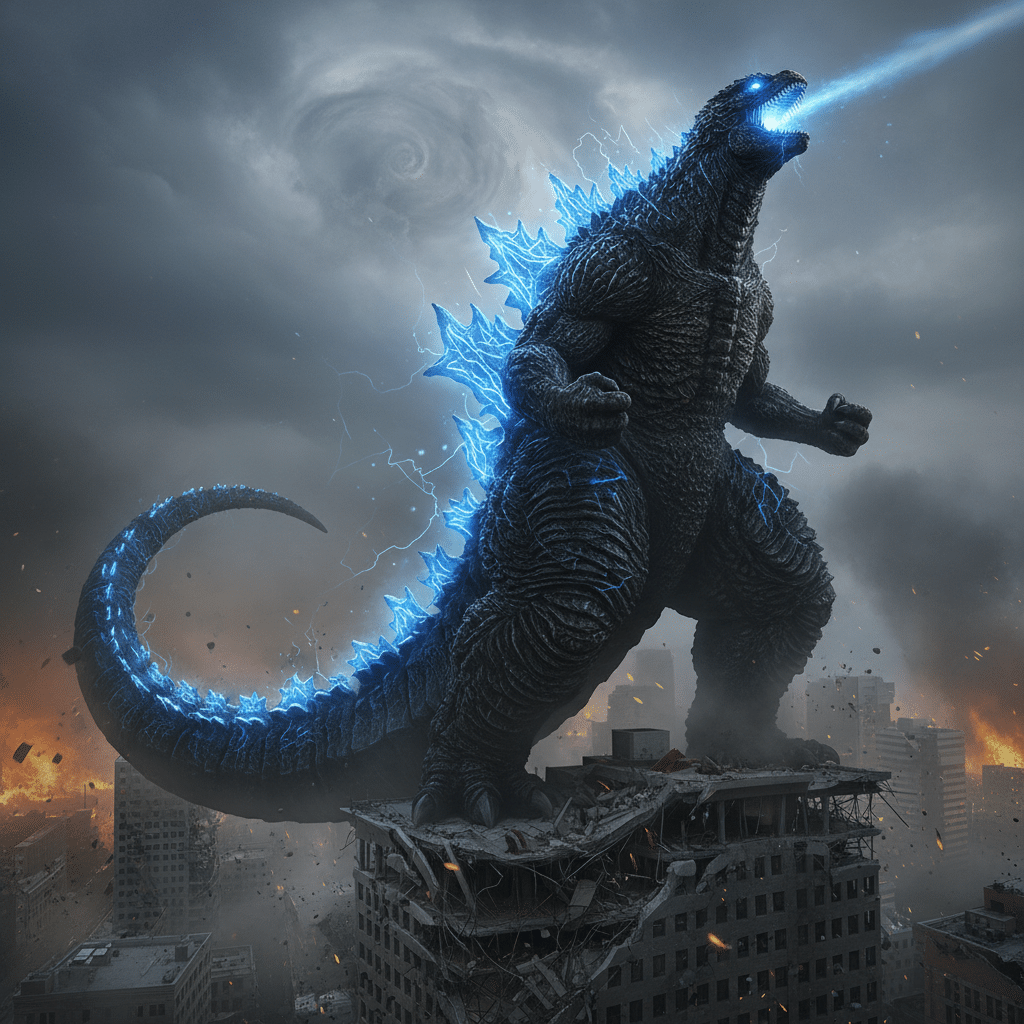
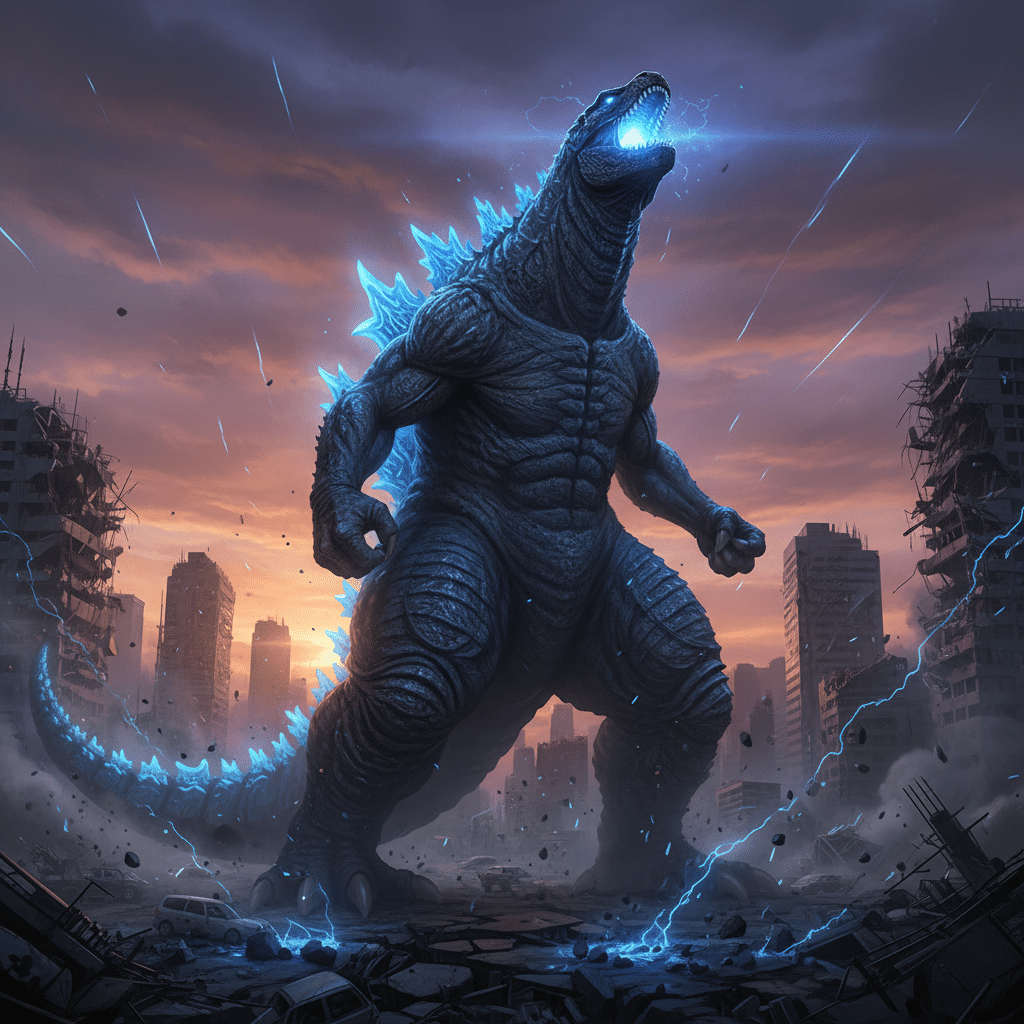
Powerful Poses
Think about the action you want to convey. Is Godzilla roaring defiantly, stomping through a city, or preparing for an atomic breath attack? Each action requires a specific pose that emphasizes movement and intent.
- Roaring: Arch his back, throw his head skyward, and spread his jaws wide. The tension in his neck and shoulders should be visible.
- Stomping: Show the weight transfer in his legs, one foot firmly planted while the other is lifted or mid-stride. A slight tilt in his body can emphasize motion.
- Atomic Breath: Arch his back, clench his fists, and angle his head to direct the energy. The dorsal fins should be aglow, indicating the charge.
Exaggerate certain elements slightly to enhance the dynamism. A wide stance, a dramatic lean, or an extended limb can add significant impact. Consider the “line of action” – an invisible curve that flows through the main gesture of the pose, giving it energy and fluidity.
Strategic Composition
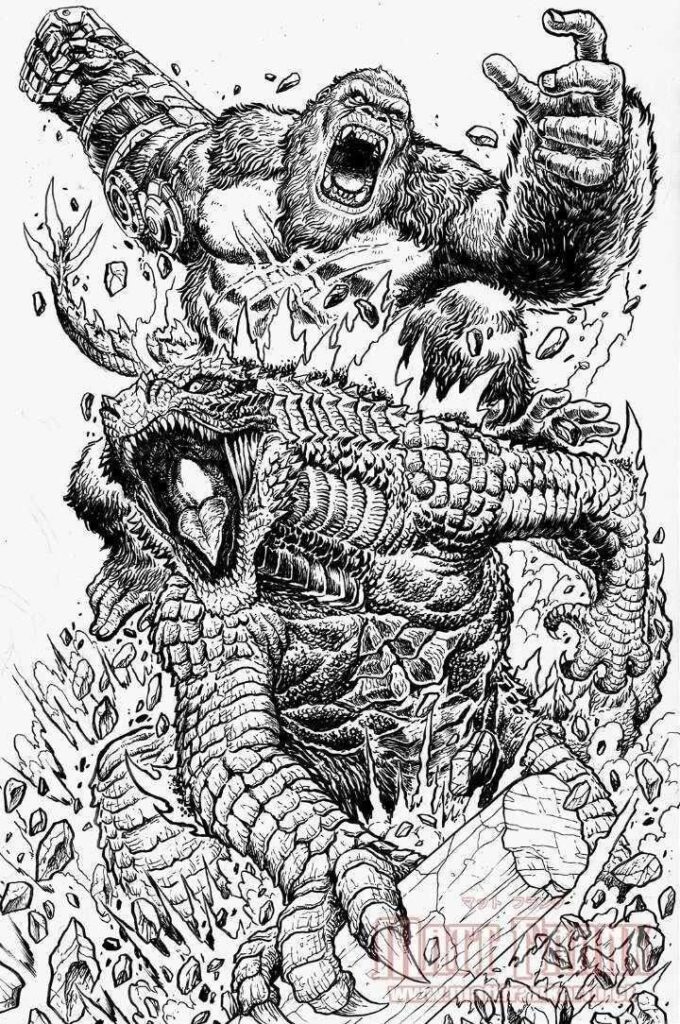
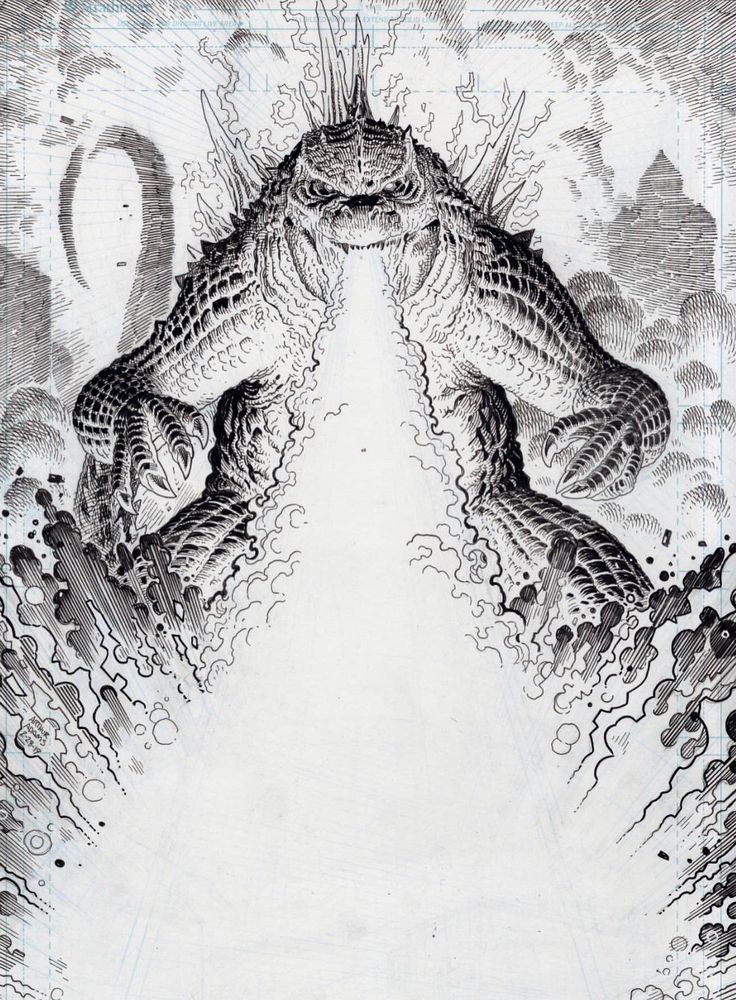
Composition refers to the arrangement of elements within your drawing. For Godzilla, this often means considering negative space, focal points, and how the viewer’s eye travels across the artwork.
- Low Angle Shots: Drawing Godzilla from a low perspective makes him appear even more gigantic and menacing, towering over the viewer. This is a classic kaiju perspective.
- Rule of Thirds: Place Godzilla’s head or another key feature along the intersections of an imagined grid, creating a more balanced and visually interesting composition.
- Leading Lines: Use elements in the environment, like crumbling buildings or roads, to create lines that lead the viewer’s eye towards Godzilla, reinforcing him as the central focal point.
- Sense of Scale: Incorporate smaller objects – tiny cars, fleeing people, distant buildings – to provide a clear sense of Godzilla’s immense scale. Without these comparative elements, his size might be less impactful. A well-composed scene tells a story without needing words.
5. Environmental Interaction and Destruction

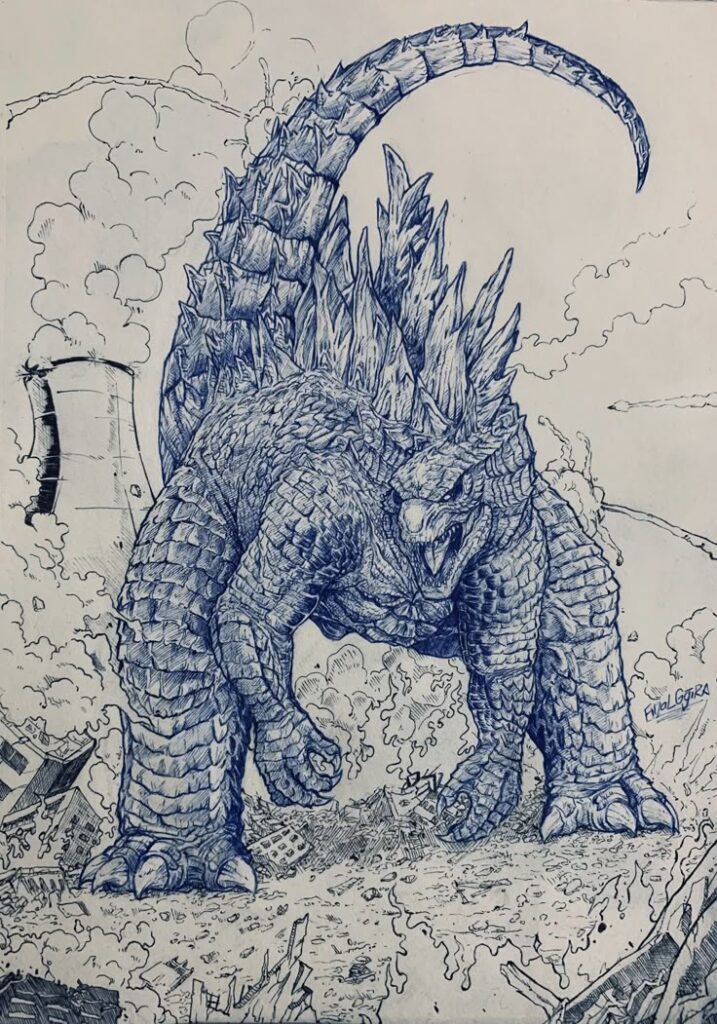
Godzilla is never alone. His very existence is defined by his interaction with the environment, often through spectacular destruction. A truly epic Godzilla drawing integrates him seamlessly into his surroundings, making the world react to his presence.
The Collateral Damage
Show the impact of his movement. Buildings should be crumbling, streets cracked, and debris scattered. Don’t just place him in a city; show him actively destroying it. Smoke and dust clouds rising from collapsed structures add to the chaos and realism. Consider the weight of falling debris and how it would interact with the ground. This attention to detail elevates the scene from a simple portrait to a narrative moment. When sketching backgrounds, having a good understanding of drawing architectural wonders can be invaluable, allowing you to depict structures realistically before they are torn apart.
Perspective and Scale in Settings
To emphasize Godzilla’s immense size, employ dramatic perspective for buildings and landscapes. Buildings should recede quickly into the background, becoming smaller and smaller. This enhances the sense of depth and makes Godzilla appear monumentally large in comparison. Use atmospheric perspective as well: distant objects appear lighter, less saturated, and blurrier, further pushing them back and highlighting Godzilla in the foreground.
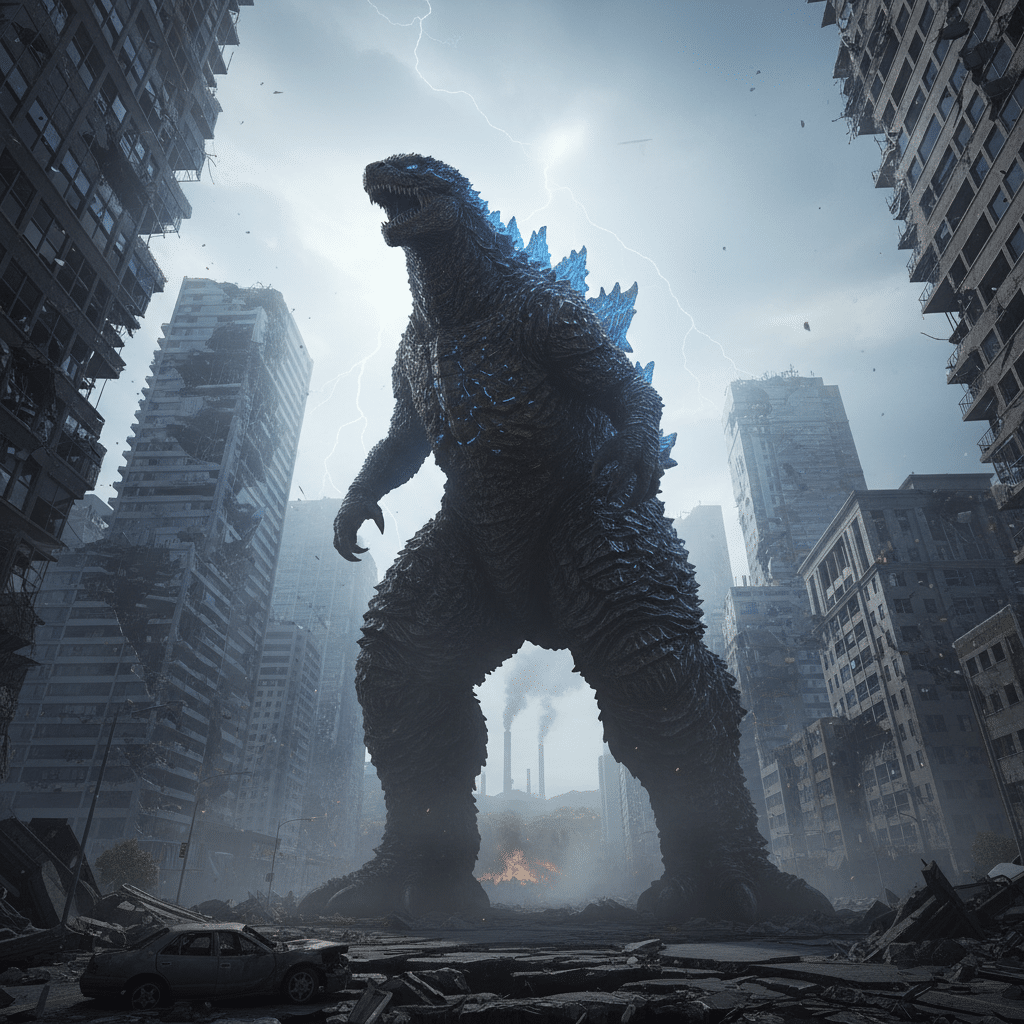
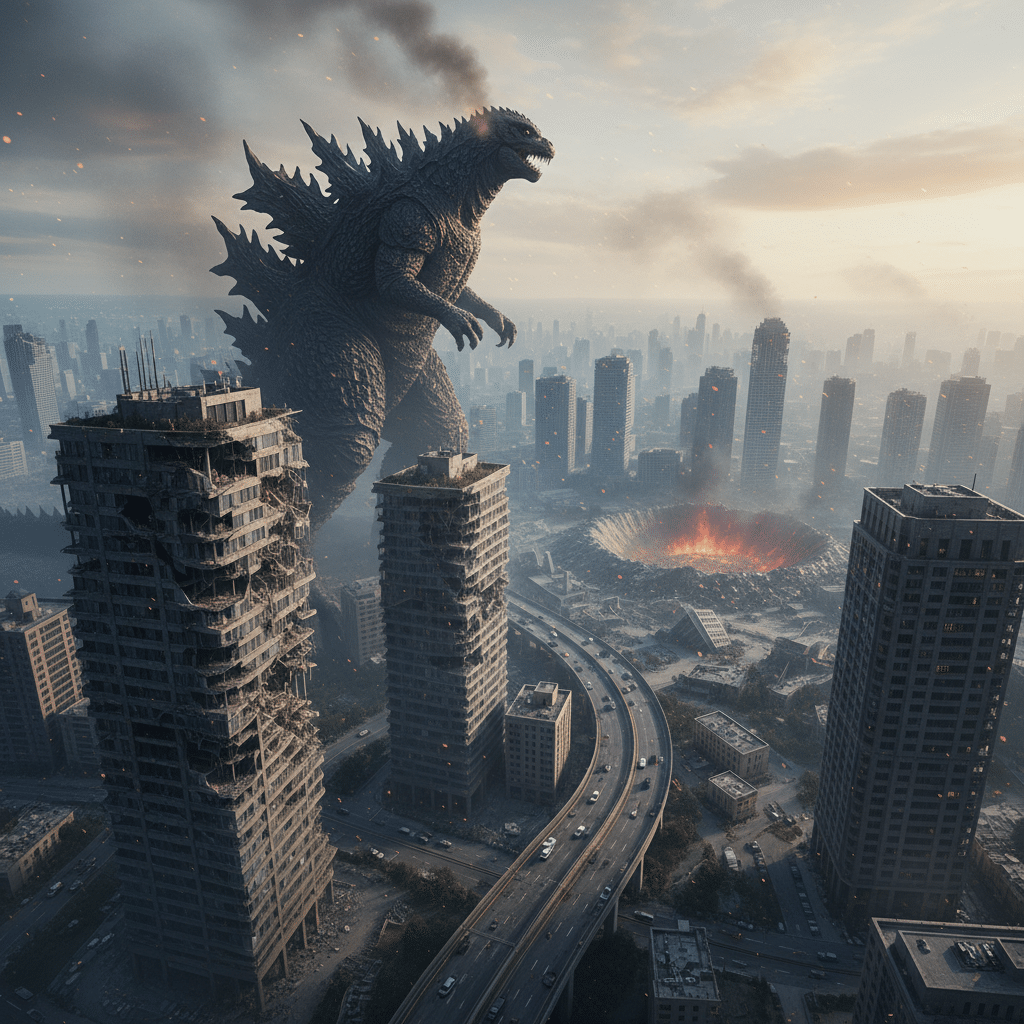
Ground and Water Effects
The ground beneath Godzilla’s feet should show the immense pressure of his weight. Cracks, displaced earth, and ripples in water where he steps or swims contribute to the realism. If he is emerging from the ocean, waves should crash dramatically around him, and water should cascade from his body. For nature drawings specifically, understanding how to render natural elements like water, rock, and flora can inform how you depict a kaiju’s interaction with the environment. These details ground him in the scene and make his presence feel physically impactful.
6. Harnessing Light and Shadow for Drama
Light and shadow are fundamental tools for any artist, but for kaiju art, they are essential for creating mood, depth, and emphasizing Godzilla’s monstrous form. Dramatic lighting can transform a simple sketch into a powerful, atmospheric scene.

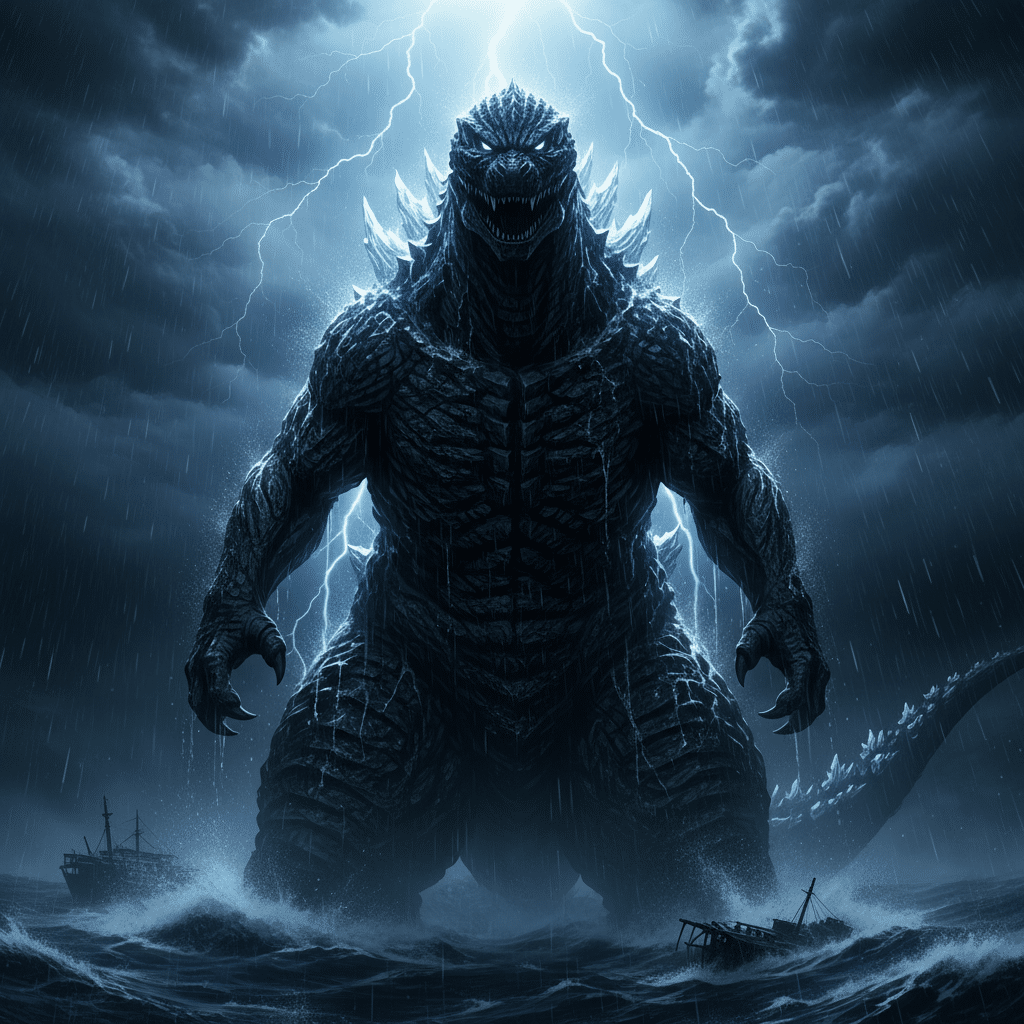
Defining Form with Light
Light reveals form. Where light hits Godzilla, surfaces will appear brighter; where light is blocked, shadows will form. Use hard, defined shadows to emphasize his rugged textures and sharp angles. Soft, blended shadows can suggest the curve and mass of his larger body parts. Consider the direction of your light source. Is it coming from above, creating deep shadows under his chin and belly? Is it from below, casting eerie upward shadows that enhance his menace?
Atmospheric Lighting
Kaiju scenes often feature dramatic atmospheric lighting. Think about specific scenarios:
- Dawn/Dusk: Long, raking shadows and warm, low-angle light can create a sense of impending doom or a dramatic reveal.
- City Lights: The glow of a ruined city can cast interesting, fragmented light across his scales.
- Atomic Glow: If Godzilla is charging his atomic breath, his dorsal fins and even parts of his body might emit an intense, internal light, casting vibrant blue or purple light onto the surrounding environment and creating self-shadows. This is a hallmark of his power.


Cast Shadows and Ambient Occlusion
Don’t forget cast shadows. Godzilla will cast a massive shadow onto the ground and any objects behind him. This further emphasizes his height and volume. Ambient occlusion – the subtle darkening in crevices and corners where light struggles to reach – adds another layer of realism and depth to his scales and body folds. For more in-depth guidance on how to effectively use light and shadow to enhance your illustrations, consider exploring tutorials on digital illustration: simple shadows and lights that bring your drawing to life. This principle applies whether you are drawing digitally or traditionally.
7. Conveying Emotion and Threat
While Godzilla might not possess human-like emotions, he certainly projects a powerful presence: an unstoppable force of nature, an avenging deity, or a formidable threat. Conveying this underlying “emotion” or intent is crucial for a compelling drawing.
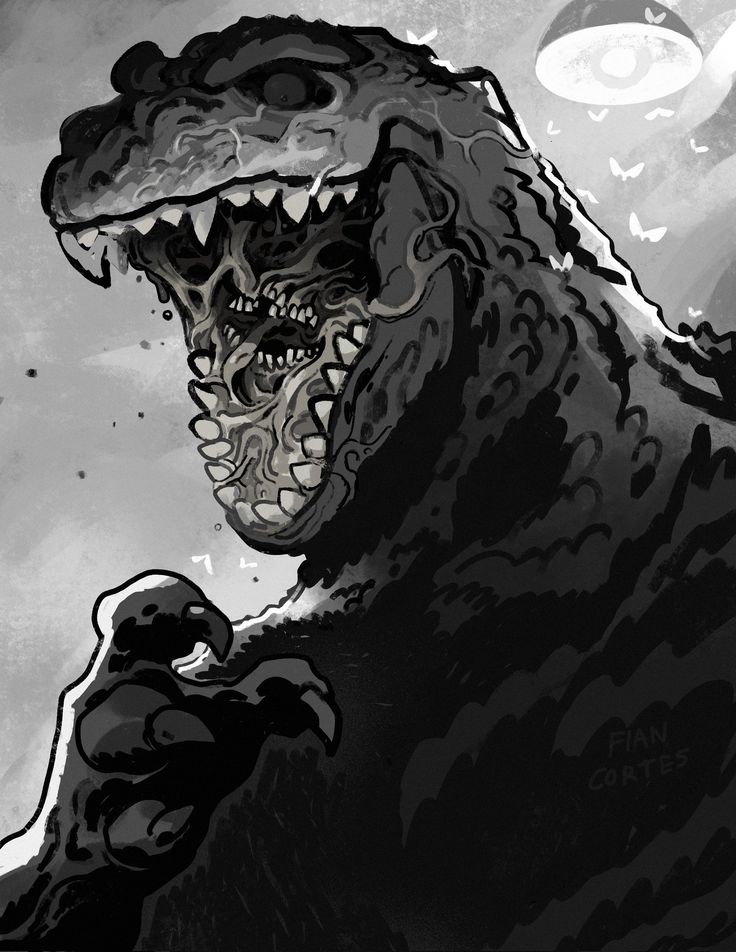
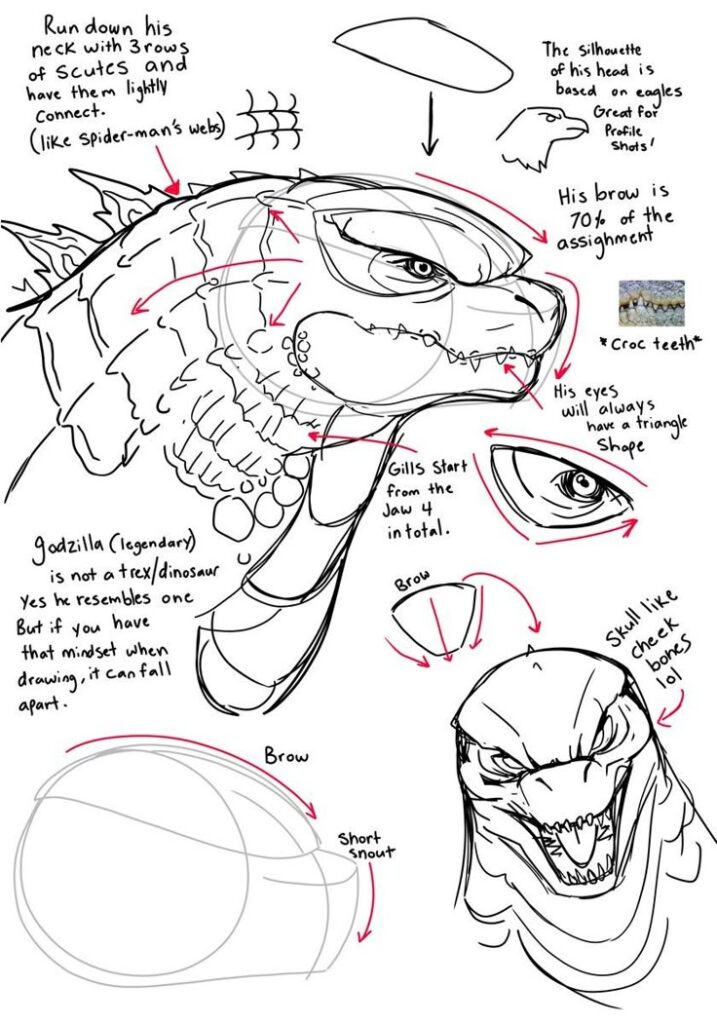
Facial Expression and Gaze
Godzilla’s face, though reptilian, is capable of conveying immense power and often a cold, ancient fury. His eyes are key: are they wide with primal rage, narrowed with focused intent, or glinting with a reptilian indifference? His brow can be furrowed for aggression, or smooth for a sense of silent observation. His powerful jaw can be clenched in determination or opened in a terrifying roar. Even subtle adjustments to these features can dramatically alter the mood of your drawing.
Body Language and Stance
Beyond his face, Godzilla’s entire body communicates his state. A hunched, forward-leaning posture can suggest aggression and an imminent charge. A more upright, defiant stance with spread arms can convey dominance and power. A subtle tilt of his head or a flex of his immense muscles can communicate readiness for battle or a moment of powerful contemplation. Think about the overall “gestalt” of his pose – what does his body as a whole tell the viewer about his current action or mood?

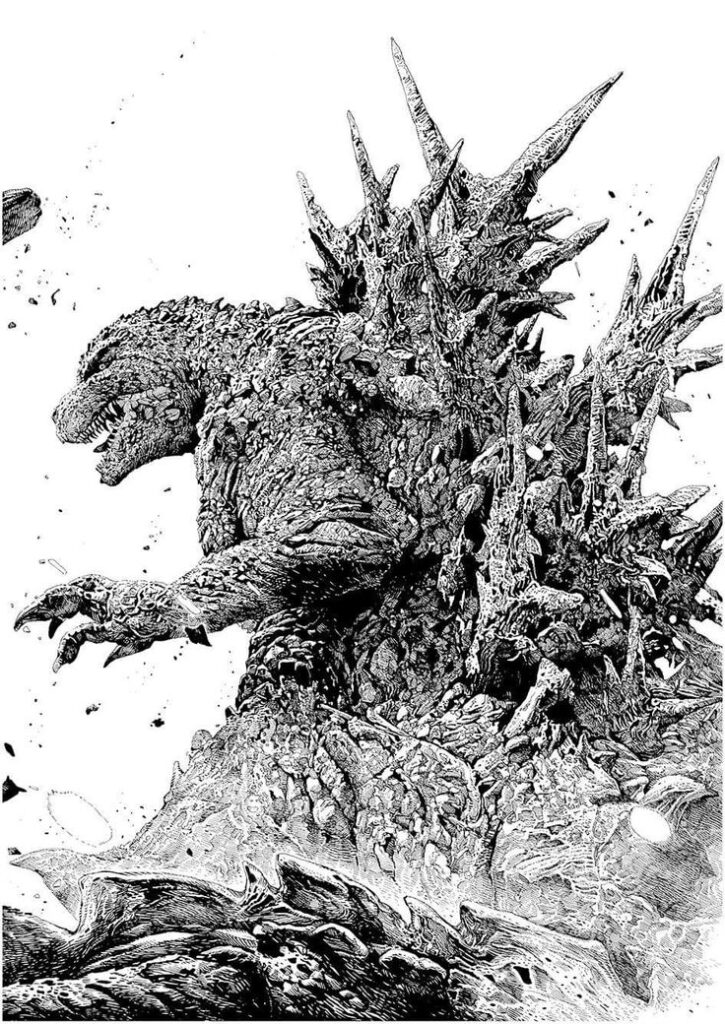
Contextual Storytelling
The overall scene and its context will heavily influence the perceived emotion. If he stands alone in a destroyed city, he might convey a sense of melancholic power or even indifference. If he is locked in battle with another kaiju, his expression and posture will be one of fierce determination. The destruction around him, the weather, and the reactions of any smaller figures (like terrified humans or military vehicles) all contribute to the narrative and amplify the emotion your Godzilla drawing aims to evoke.
Conclusion
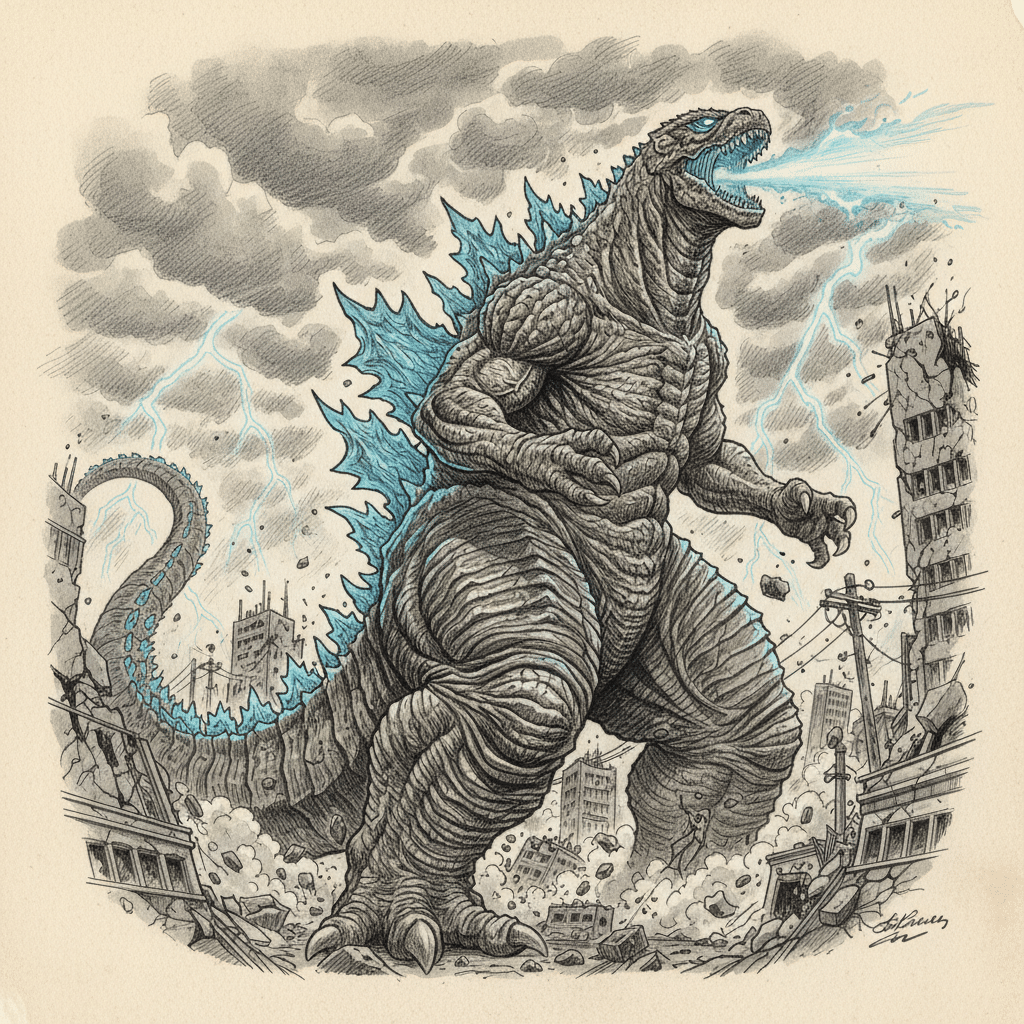

Creating an epic Godzilla drawing is a journey that transcends mere illustration; it’s about channeling the raw power, ancient majesty, and destructive force of cinema’s most iconic kaiju. By mastering these seven essential techniques – from understanding his formidable anatomy and emphasizing his colossal form, to meticulously rendering his textures, orchestrating dynamic compositions, integrating environmental interaction, and harnessing the power of light and shadow to convey his immense threat – you will transform your artwork into a captivating tribute to the King of the Monsters.
Every line, every shadow, and every destroyed building contributes to the narrative of your Godzilla. Embrace the challenge, delve into the details, and allow your artistic vision to bring forth a rendition of Godzilla that is not only visually stunning but also truly feels alive with kaiju might. Practice consistently, observe critically, and let your passion for this legendary creature fuel your artistic endeavors. The canvas awaits its next titan.
- 20shares
- Facebook0
- Pinterest20
- Twitter0

